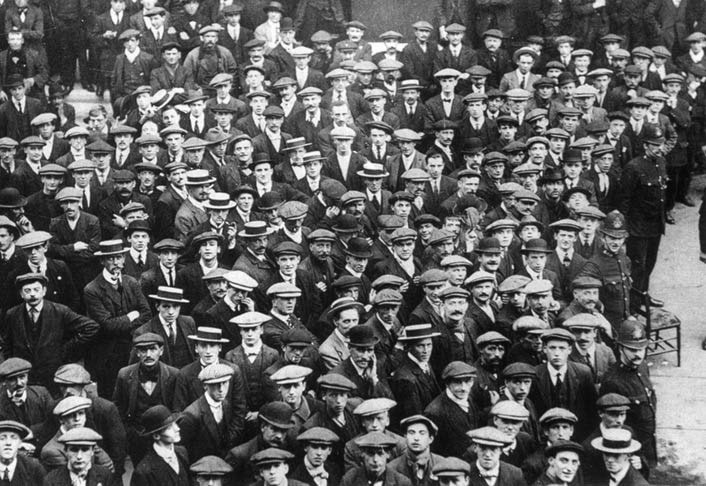"The World Convulsed" was the banner headline stretching across the top of the front page of the Cranbrook Herald, on Thursday, August 6, 1914.
Five weeks earlier, on July 2, 1914, the Herald had printed a short article on page five, reporting the assassination of Archduke Franz Ferdinand, heir apparent to the Austrian throne. It was to be the catalyst that would lead to the war in Europe one month later although few in Cranbrook would have recognized it as such at the time.
The region was still in shock and grief, in the aftermath of an explosion in the Hillcrest coal mine near Blairmore, Alberta, which took the lives of 189 men, many of whom were known to the people of Cranbrook. It remains the worst coal mining disaster in Canadian history (Jim Cameron, Janus, June 13,2014).
But as the convoluted web of European alliances and mobilization plans of various nations began to inevitably play out, a European crisis began that would push all other headlines of the front pages.
Britain declared war on Germany and Austria-Hungary on August 4, meaning that the Dominion of Canada was automatically at war as well. The Governor General of Canada — Prince Arthur, Duke of Connaught and Strathearn — officially declared war on Germany the next day, Wednesday, August 5. It would be another month before Canadian troops arrived in Europe.
The war, as expected, began with free maneuvering in Belgium and Northern France, as French and Belgian troops moved to counter the advancing German's "Schlieffen Plan," a two-pronged attack through France and Belgium (it was Germany's violation of Belgium's neutrality which prompted the British, and thus Canadian, declarations of war). The British Expeditionary Force would arrive in France on August 16.
In 1914, the Cranbrook Herald, along with its rival the Cranbrook Prospector, were going through difficult times, made even more so by the advent of the war. J.R. Thompson was the Herald editor at the time. L.P. Sullivan, a long-time employee, would become editor later that year.
There was no news, per se, of Canada's declaration of war, the following day, Thursday, August 6. But Herald staff had compiled a rather comprehensive summary of international events as they were occurring.
The sub-headlines and short stories stacked in columns on the front page of the August 6 edition, compiled via electric printing telegraph technology, discuss in large measure the stiffer than expected resistance that the Germans came up against in Belgium.
• “Belgian troops repulse German invaders (Attacking army meets with withering fire from big guns of frontier fortresses — Mine exploded under train).”
• “Prussians nearly annihilated.”
• “Defeated Germans Lost Heavily (the Germans, completely repulsed, have been unable to renew their attack on Liege).”
• “Belgians Win Sweeping Victory (two entire regiments of Germans said to have been decimated).”
The reportage is in the language of the time — nations are referred to as “she,” for instance, and the news of Great Britain declaring war is rather breathless (“…that momentous decision for which the whole world has been waiting!”).
And while there is not any overt jingoism, or suggestions that this will be a short war, there are some clues as to the irony that a new world that no one was expecting was at hand.
• “Quarter Million volunteer in London.”
“Over one quarter million volunteers were enrolled in London today (Aug. 6). The enrollment was the result of the British War Office issuing a call to arms for 100,000 men.”
The enthusiastic rush to enlist, by young men from all nations, was unprecedented. Patriotism was never on such joyous display.
But the early war of free maneuvering, so 19th century, had by the end of the fall resulted in the infamous trench system and stalemate, and the original British army had been wiped out.
The Herald also reported that a mob in Winnipeg stoned the German and Austrian consulates and German clubs. Also, “a frenzied mob at Vancouver tore down the ensign from the German consulate offices.”
And: “The Ottawa government has stated that they will not allow Austrians or Germans to leave Canada.”
And: “Canadian troops, from present indications, will number about 100,000, and will be hurriedly mobilized and sent to England.” (Canada’s expeditionary force eventually totalled 620,000 people mobilized, of which more than 60,000 were killed and 250,000 wounded — a 39 per cent casualty rate).
And: “Mobilization notices have been posted in Cranbrook calling for the report of all naval reservists.”
The Herald also published a sidebar showing the naval strength of the “Seven Nations Involved” — Germany, Austria, Italy, Russia, France, Great Britain and Servia (sic), with tables listing super-dreadnaughts, dreadnaughts, other battleships, armored cruisers, cruisers, destroyers, torpedo boats and submarines.
Another sidebar shows “How the War Powers figure in the finances of the World.”
And the Herald published a piece of several hundred words on its front page, detailing the underlying causes of the war, in particular how it stemmed from Austria-Hungary’s confrontation with Servia.
In the coming weeks, the Herald would report how Cranbrook would start sending its own volunteers off to war, that a Kootenay regiment was to be formed, citizens would meet to find ways to equip two companies, and members of the local Rifle Association would step forward.
See tomorrow’s Daily Townsman for Part II of “The World Convulsed.”
